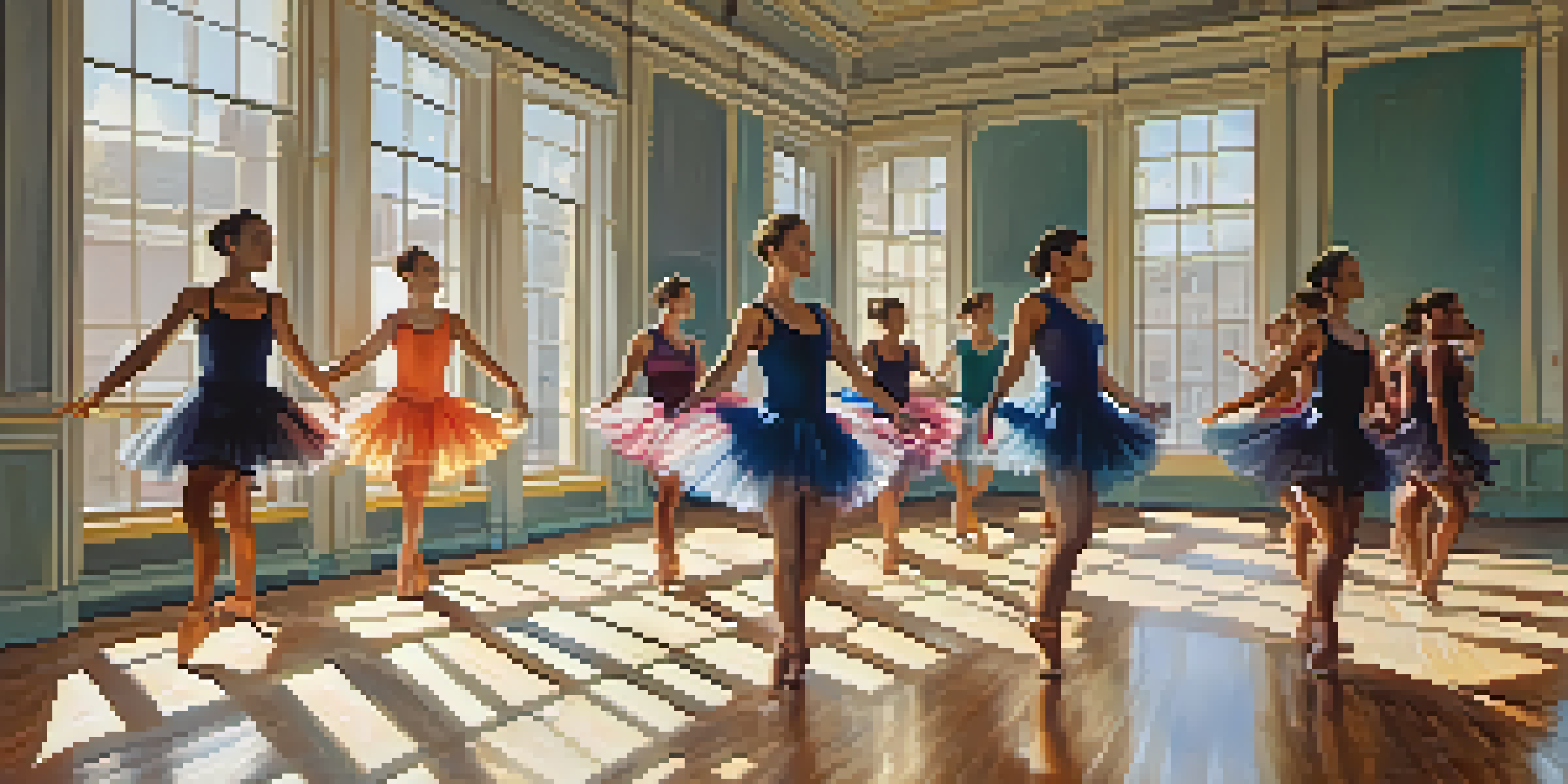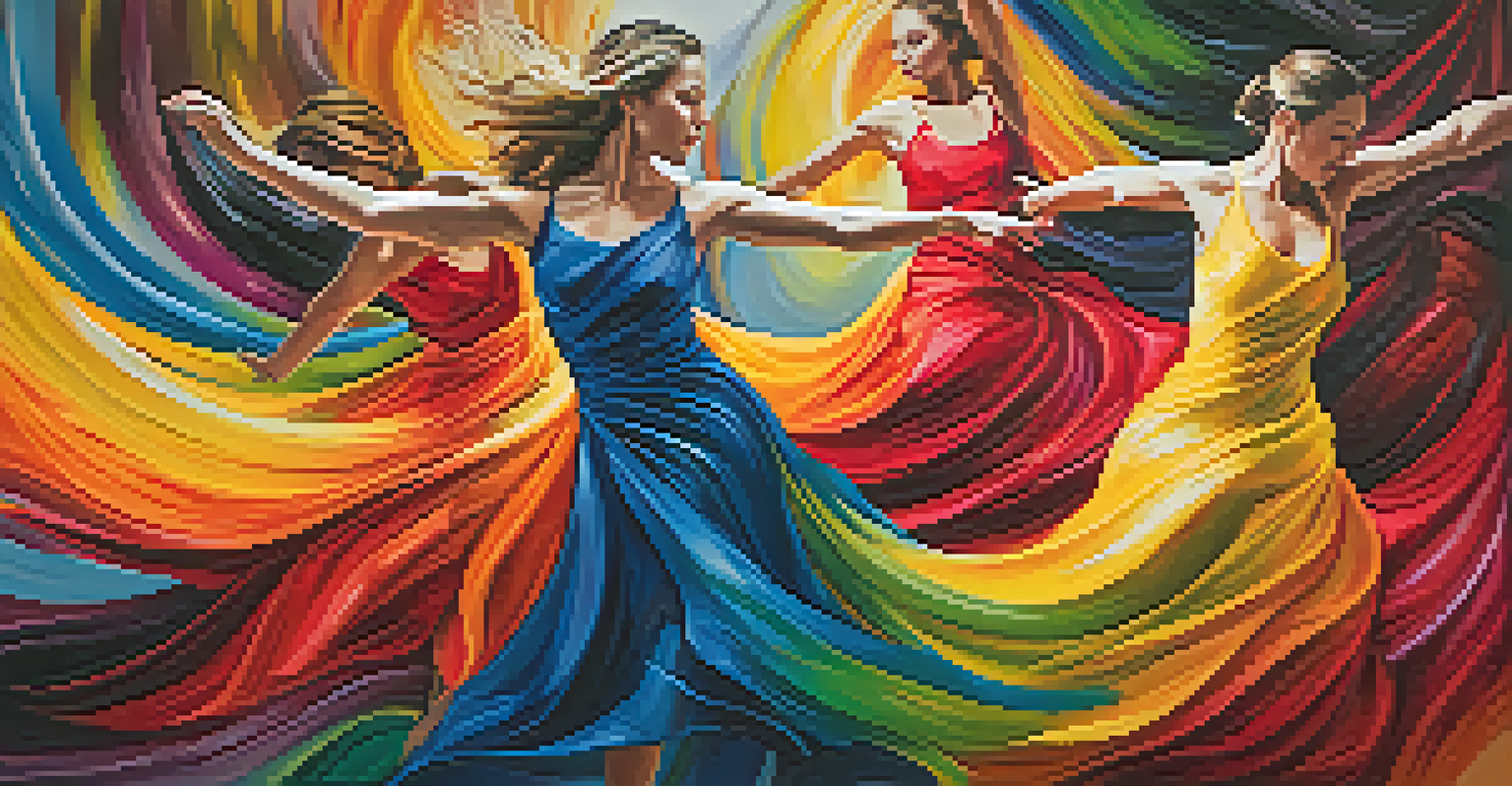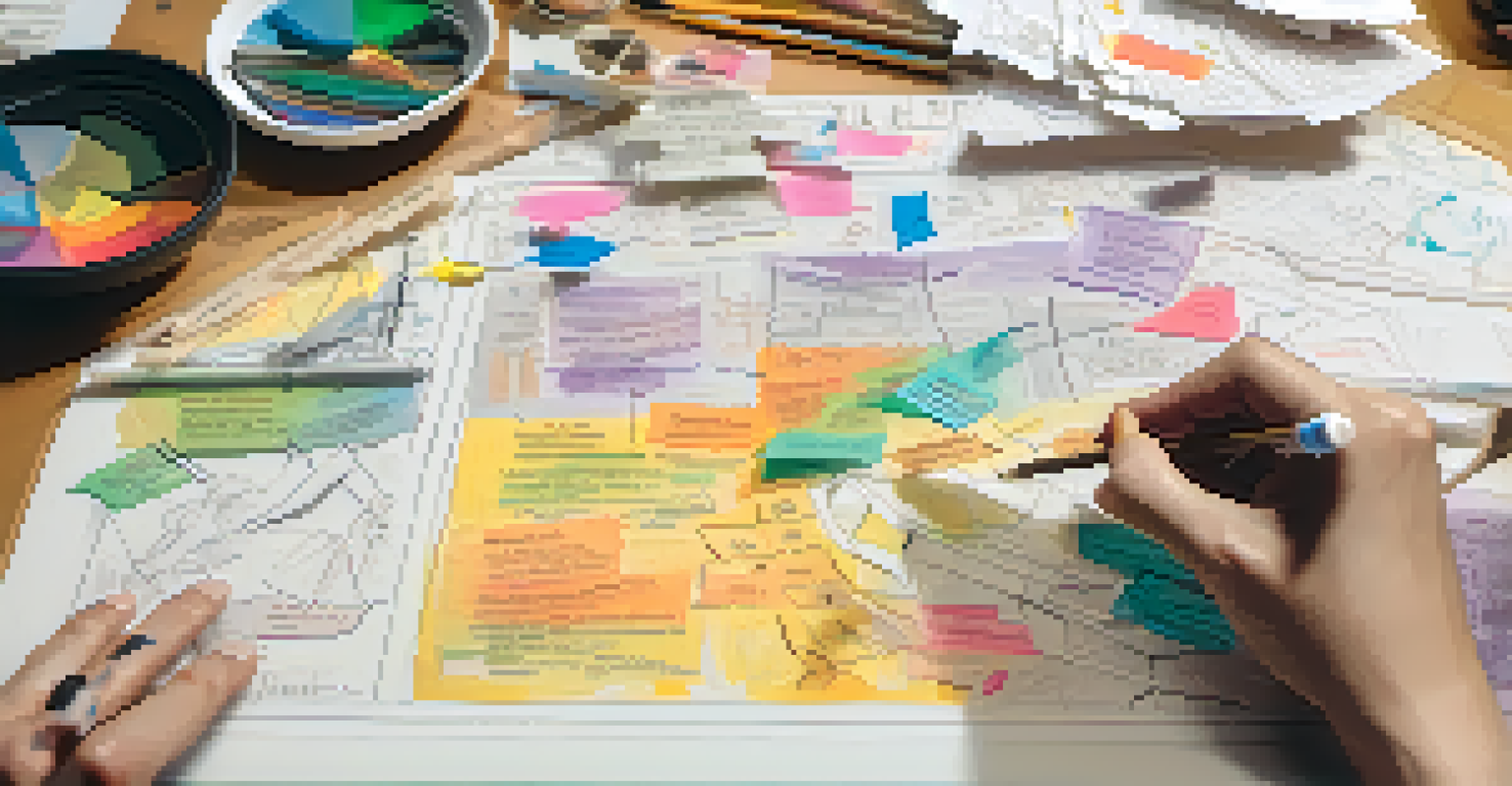The Psychological Aspects of Choreographic Creation Process

Understanding the Creative Mindset in Choreography
Choreographic creation is as much about mental processes as it is about movement. Dancers and choreographers often enter a unique mental state when conceptualizing their work, one that allows them to blend technical skill with emotional expression. This mindset can be influenced by various factors, including personal experiences and artistic influences. By understanding this creative mindset, choreographers can better navigate their artistic journey.
Dance is the hidden language of the soul.
Imagine a painter standing before a blank canvas, their mind swirling with colors and forms. Similarly, choreographers must envision their dance pieces before they can bring them to life. This initial brainstorming phase is crucial, as it lays the groundwork for the entire creation process. It’s during this phase that ideas can either blossom into intricate works or remain as fleeting thoughts.
Moreover, cultivating a conducive environment for creativity is essential. Just as a painter needs quality materials, choreographers thrive in spaces that inspire them. Engaging in discussions, attending performances, or simply stepping outside can stimulate the imagination and lead to innovative ideas.
Emotional Influences on Choreographic Decisions
Emotions play a pivotal role in the choreographic process, influencing both the creation and performance of dance works. Choreographers often draw from their own feelings or experiences, embedding layers of meaning into their pieces. This emotional connection not only enriches the choreography but also resonates with audiences on a deeper level, creating a shared experience.

Consider how a choreographer might express joy through vibrant, energetic movements, while sadness might be translated into slower, more fluid motions. These emotional nuances help convey the intended message of the piece. The choice of music, lighting, and even the dancers selected can all reflect the emotional tone the choreographer wishes to achieve.
Creative Mindset Fuels Choreography
Choreographers enter a unique mental state that blends technical skill with emotional expression, essential for creating impactful dance pieces.
Furthermore, the collaborative nature of dance often leads to a blending of emotional perspectives. Working with dancers can introduce new emotional dimensions to the choreography, as performers bring their own interpretations and feelings into the mix. This collaboration can elevate the work, making it a richer expression of collective emotions.
Cognitive Processes Behind Choreographic Structure
The cognitive processes involved in choreographic creation are vital for structuring a dance piece. Choreographers must consider various elements such as timing, spacing, and transitions to create a cohesive work. This requires a balance between creativity and analytical thinking, as they must visualize how movements will flow together.
Creativity takes courage.
Think of a choreographer as a composer, arranging notes to create a symphony. Each movement must complement the others, just like musical notes must harmonize. This intricate planning phase is essential for ensuring that the choreography not only looks beautiful but also feels organic and connected.
Additionally, choreographers often use various techniques to aid their cognitive processes. Tools like storyboards or mental mapping can help them visualize the entire piece before it is even performed. By breaking down the choreography into manageable sections, they can more easily refine their ideas and create a polished final product.
The Role of Intuition in Choreographic Creation
Intuition is a powerful force in the choreographic process, guiding decisions that may not always be backed by logical reasoning. Many choreographers rely on their gut feelings to choose movements, music, or themes that resonate with them. This intuitive approach can lead to unexpected breakthroughs and innovative expressions in their work.
Imagine an artist who suddenly feels inspired by a particular sound or movement, leading them to explore new creative paths. Choreographers often experience similar moments of inspiration that can alter the course of their choreography. By trusting their instincts, they can tap into a deeper level of creativity that might otherwise remain unexplored.
Emotions Shape Dance Expressions
The emotional influences in choreography not only enrich the work but also create a deeper connection with audiences.
However, balancing intuition with structured planning can be a challenge. While intuition can spark creativity, it’s essential to integrate it with thoughtful organization to ensure the choreography is coherent and impactful. Finding this balance can result in a dynamic and engaging dance piece that captivates audiences.
The Impact of Feedback on Choreographic Development
Feedback from peers, dancers, and audiences plays a crucial role in the evolution of choreographic works. Choreographers often seek constructive criticism to refine their pieces, understanding that different perspectives can bring invaluable insights. This process not only improves the work but also fosters a sense of community within the dance world.
Imagine a sculptor chiseling away at a block of marble, guided by the advice of fellow artists. Similarly, choreographers benefit from external input that helps shape their creations. This collaborative spirit can lead to a richer final product, as it allows for the incorporation of diverse viewpoints and ideas.
Moreover, engaging with audiences can provide a unique perspective that may not be visible during the creation process. Observing how viewers react to certain movements or themes can guide choreographers in making adjustments that enhance emotional impact and clarity. This ongoing dialogue between creator and audience is essential for the growth of choreographic art.
Overcoming Creative Blocks in Choreography
Creative blocks are a common challenge faced by choreographers, often leading to frustration and self-doubt. These blocks can stem from various sources, including pressure to produce or fear of not meeting expectations. Understanding how to navigate these obstacles is crucial for maintaining a productive creative process.
When faced with a block, choreographers might find it helpful to take a break or engage in activities that inspire them. Stepping away from the work can provide clarity and rejuvenate creative energy. Just as a gardener must sometimes let their plants rest, choreographers too need moments of pause to allow new ideas to flourish.
Feedback Drives Choreographic Growth
Constructive feedback from peers and audiences is vital for refining dance works and fostering a collaborative spirit in the dance community.
Additionally, experimenting with new styles, techniques, or collaborations can help break through creative stagnation. Trying a different approach or working with new dancers can introduce fresh perspectives and reignite enthusiasm for the project. Embracing these moments of uncertainty can ultimately lead to growth and innovation in the choreographic process.
The Final Stages: Refining and Presenting Choreography
As the choreographic process nears completion, the focus shifts to refining and preparing for presentation. This stage is where the vision begins to take its final form, requiring attention to detail and a clear understanding of the artistic intent. Choreographers often revisit their work, making adjustments to ensure it aligns with their original concept.
Consider this stage as a sculptor polishing their masterpiece before unveiling it to the world. Every movement, every transition, and every interaction between dancers must be meticulously crafted to create a compelling performance. This attention to detail can elevate a dance piece from good to extraordinary.

Finally, presenting the choreography is a culmination of all the hard work and emotional investment. It’s a moment of vulnerability, as the choreographer shares their vision with an audience. The satisfaction of seeing their creation come to life, along with the anticipation of audience reactions, makes this stage both exhilarating and rewarding.